Dyes
Dyes for clothing, aside from making a fashion statement, also serve to separate classes and professions. Nowhere is this truer than in the Kingdom of Thebai, where the Kadmaian Dynasty had a hereditary connection to Tyre. A longstanding trade relationship based on this kinship has survived the end of the Dynasty, allowing Thebai to maintain priority access to murex dyes and to continue its role as the hub of the dye trade for all of Hellas.
Most of the rare and expensive colors have a more common, less vibrant, less colorfast variety that tends to be worn by the lower social classes. Those at the very bottom of society wear whatever castoffs they can get, no matter the color.
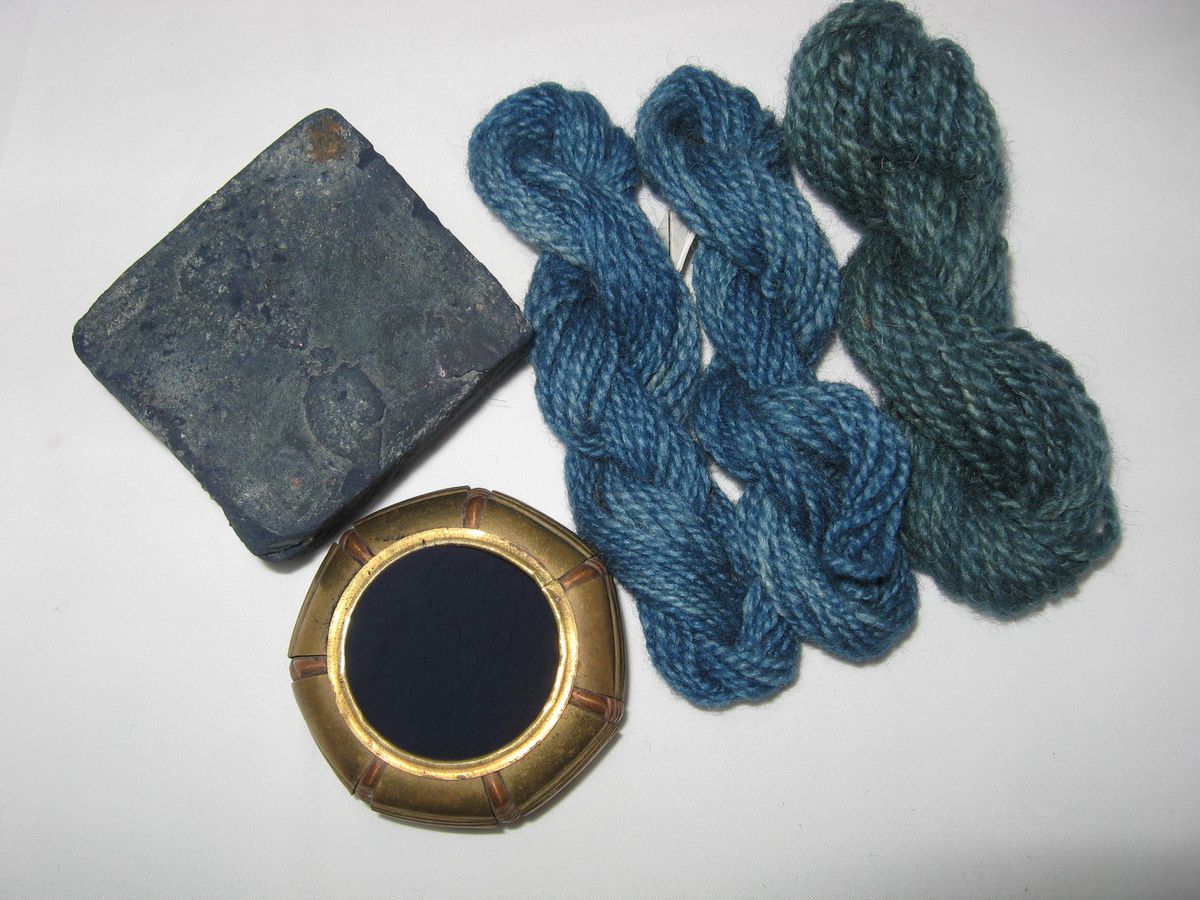 True indigo is a bean plant cultivated in India and Aethiopia, obtained through trade routes through Aigyptos and Anatolia. It is a ground-cover shrub one to two meters tall. It has sheaves of pink or violet flowers, but the dye is actually obtained from the light green leaves, which are soaked in water and fermented. The precipitate from the fermented leaf solution is mixed with a strong base such as lye to stabilize it as a bright dye that in Modern times is used in denim blue jeans.
True indigo is a bean plant cultivated in India and Aethiopia, obtained through trade routes through Aigyptos and Anatolia. It is a ground-cover shrub one to two meters tall. It has sheaves of pink or violet flowers, but the dye is actually obtained from the light green leaves, which are soaked in water and fermented. The precipitate from the fermented leaf solution is mixed with a strong base such as lye to stabilize it as a bright dye that in Modern times is used in denim blue jeans.
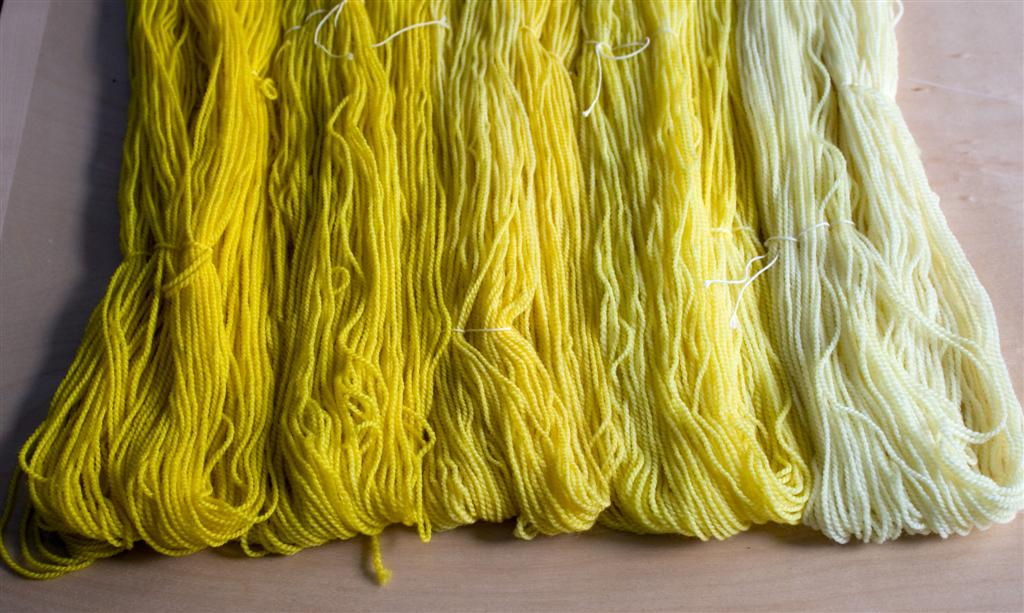 Weld, yellow weed, or dyers rocket is a small green spike-shaped plant with tiny yellow flowers. It needs to be harvested in the spring before the flowers turn to fruit.
The vivid yellow produced by yellow weed can be mixed with blue woad to create a dye used at least as far back as Roman times, which would later be called Lincoln Green and associated with the cloak worn by Robin Hood.
Weld, yellow weed, or dyers rocket is a small green spike-shaped plant with tiny yellow flowers. It needs to be harvested in the spring before the flowers turn to fruit.
The vivid yellow produced by yellow weed can be mixed with blue woad to create a dye used at least as far back as Roman times, which would later be called Lincoln Green and associated with the cloak worn by Robin Hood.
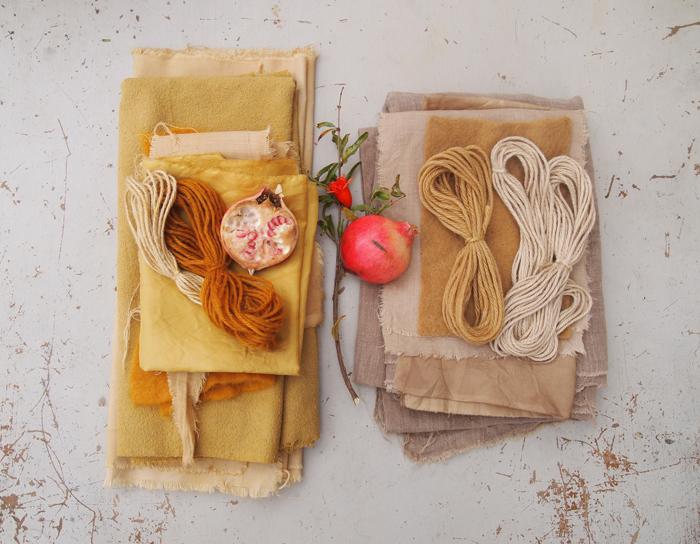 Pomegranate rind can be used to make yellow dye. Adding iron produces a dull olive green, like that of modern military uniforms. More mordants can make a variety of grays including black.
Pomegranate rind can be used to make yellow dye. Adding iron produces a dull olive green, like that of modern military uniforms. More mordants can make a variety of grays including black.
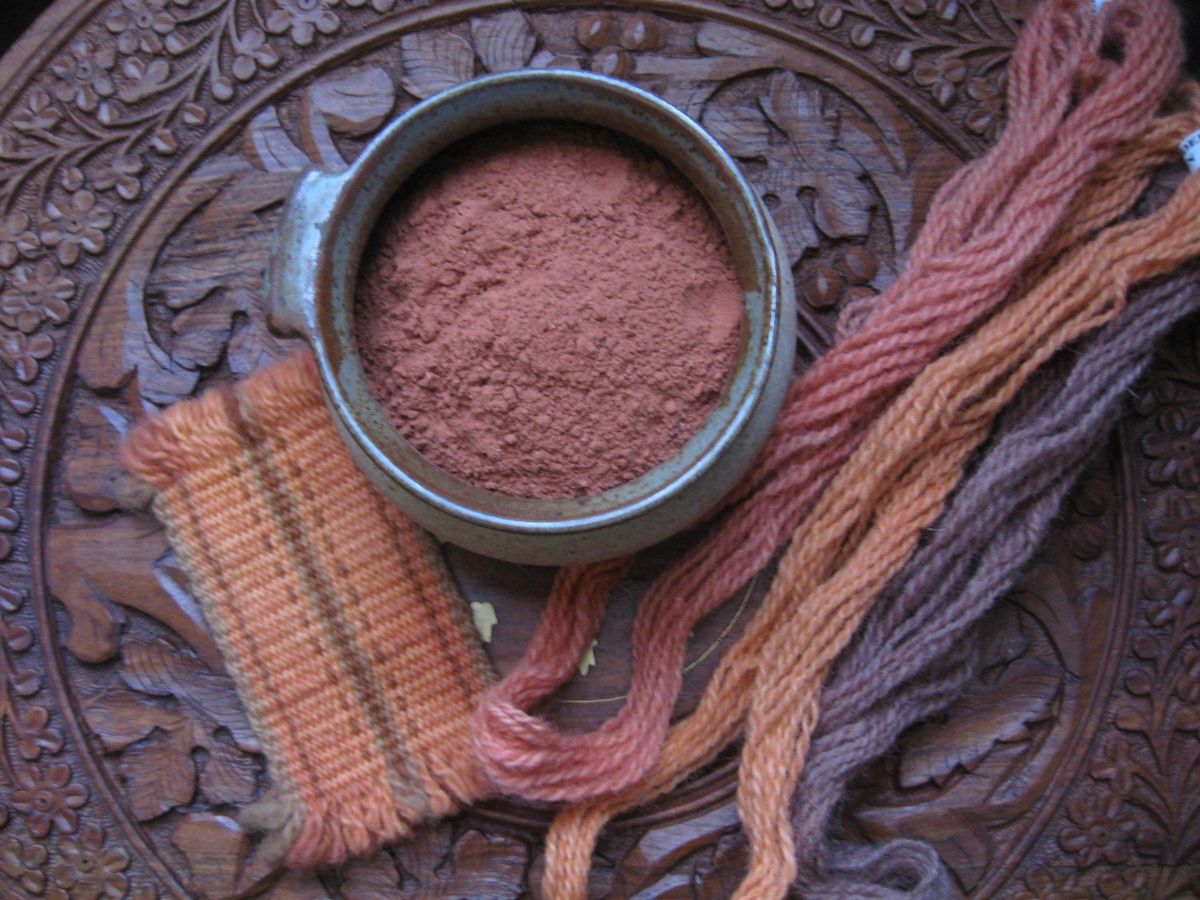 In addition to Tyrian Red made from sea snails, a more common red is found in the madder plant of Aigytpos and Anatolia, especially a variety called rose madder, and is made by boiling the roots. A complicated multistep process from India involves "sumac and oak galls, calf's blood, sheep's dung, oil, soda, alum, and a solution of tin" to produce a particularly striking red. The plant can also be used for orange.
In addition to Tyrian Red made from sea snails, a more common red is found in the madder plant of Aigytpos and Anatolia, especially a variety called rose madder, and is made by boiling the roots. A complicated multistep process from India involves "sumac and oak galls, calf's blood, sheep's dung, oil, soda, alum, and a solution of tin" to produce a particularly striking red. The plant can also be used for orange.
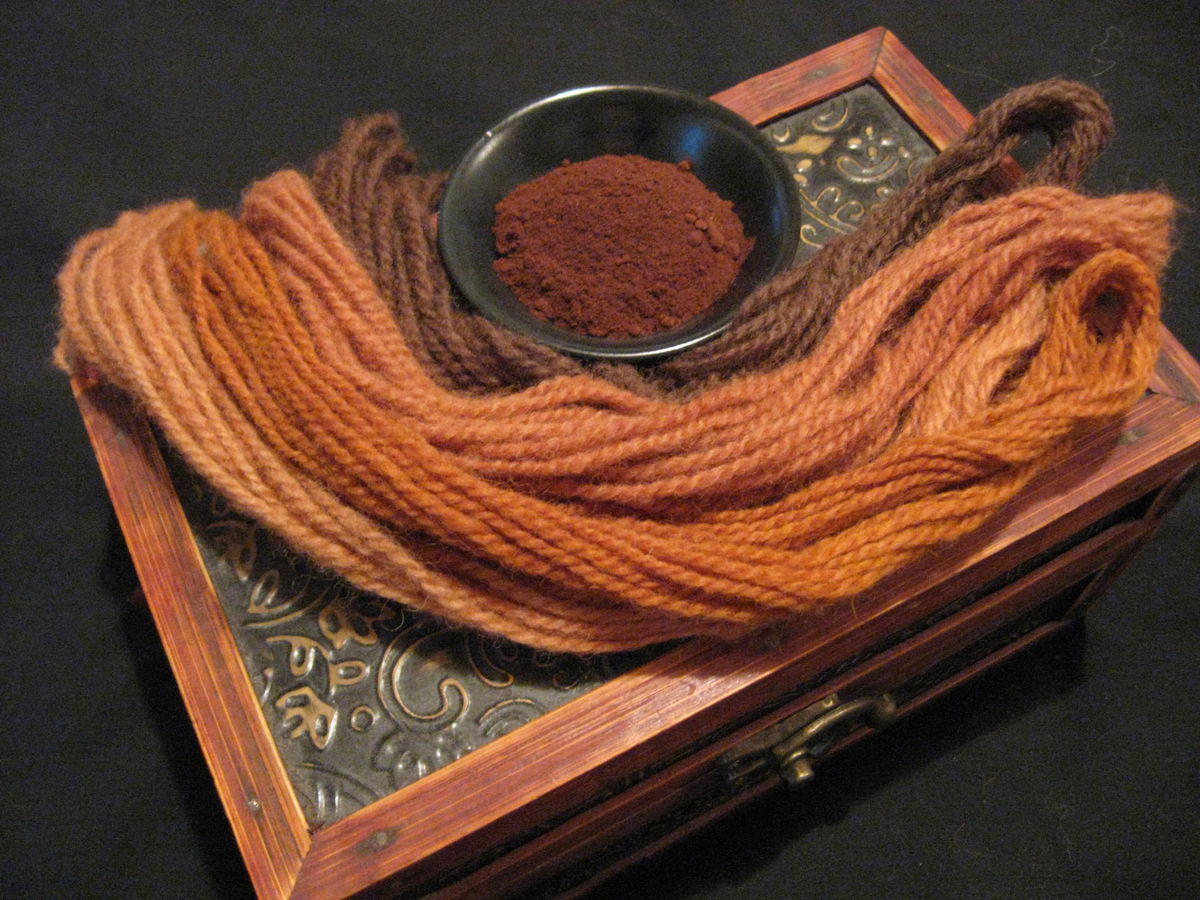 Cutch is a brown dye used for tanning and dyeing and for preserving fishing nets and sails. Cutch will dye wool, silk, and cotton a yellowish-brown. Cutch gives gray-browns with an iron mordant and olive-browns with a copper mordant. Cutch is an extract of acacia trees made by boiling the wood chips in water and evaporating the resulting brew into hard mats that can then be broken into powder. The Acacia is native to India and Africa.
Cutch is a brown dye used for tanning and dyeing and for preserving fishing nets and sails. Cutch will dye wool, silk, and cotton a yellowish-brown. Cutch gives gray-browns with an iron mordant and olive-browns with a copper mordant. Cutch is an extract of acacia trees made by boiling the wood chips in water and evaporating the resulting brew into hard mats that can then be broken into powder. The Acacia is native to India and Africa.
Royalty
Royal families tend to wear a fancier style of garments, made from higher quality cloth, and dyed with more exclusive colors. In Thebai, this is almost exclusively Tyrian dyes, ranging from reds to blues to purples, often embroidered in colorful or metallic thread and adorned in fibulas and broaches. The kokkonial reds used by royals and nobles in other cities are rarely used as a garment's primary color in Tyrian-descended Thebai.Nobles
The Spartoi, befitting their reptilian origins, favor weld greens and yellows, with madder reds and oranges usually reserved for trim or accessories.Peasants and Slaves
The peasant class may wear lower quality cutch brown or pomegranate colors in dark yellow, olive drab, or dark gray. Slaves tend to wear cast-offs, which may shabbier and faded versions of the colors worn by their respective households. Beggars often wear scraps of many colors roughly sewn into a larger pied mantle or robe.Priesthood
The priesthood wears whitened robes when conducting religious ceremonies, and formerly white robes that have turned a light gray for informal purposes. These garments generally start their lifecycles as one-use robes worn by wealthy individuals on important occasions, which are afterward donated to the temple. Off-duty priests often wear woad blue when they go off the temple grounds.True Indigo

by Brush Creek Woolworks
Woad
A more dilute version of indigo blue can also be obtained from a flowering plant called woad, which is cultivated in the Asian steppes and in central Europe. This also can be traded from Aigyptos.Murex
The most favorable season for taking these [murex shellfish] is after the rising of the Dog-star, or else before spring; for when they have once discharged their waxy secretion, their juices have no consistency... After it is taken, the vein is extracted, which we have previously spoken of, to which it is requisite to add salt... It is sufficient to leave them to steep for a period of three days, and no more... It is then set to boil in vessels of tin [or lead], and every hundred amphorae ought to be boiled down to five hundred pounds of dye, by the application of a moderate heat... About the tenth day, generally, the whole contents of the cauldron are in a liquefied state, upon which a fleece, from which the grease has been cleansed, is plunged into it by way of making trial; but until such time as the color is found to satisfy the wishes of those preparing it, the liquor is still kept on the boil... The tint that inclines to red is looked upon as inferior to that which is of a blackish hue. The wool is left to lie in soak for five hours, and then, after carding it, it is thrown in again, until it has fully imbibed the color.Murex dyes ranging in color from Tyrian purple to hyacinth purple and royal blue Tyrian red are produced from the sea snails cultivated by the Tyrians of Kanaanite Phoinikia. Snails may be farmed and "milked" is a sustainable way, or harvested and crushed in their shells, which is faster, less laborious, and more common despite the ecological damage. Either way, 12,000 snails are required to produce the dye for a single garment. As a result, this dye is rare and expensive, but unparalleled in its vividness and its property of getting brighter through exposure to sunlight. Snails are collected in large vats and left to decompose, producing a hideous stench. Multiple species of sea snail are harvested, with one producing Tyrian red, one producing an indigo/blue, and Tyrian purple arising from a careful ratio of the two.
Cudbear
Another less regal purple dye is cudbear, which is extracted from orchil lichens. It can be used to dye wool and silk without the use of mordant. A compound called orcinol is first extracted from certain lichens, and then converted to orcein by ammonia (from stale urine) and air. If the conversion is carried out in the presence of potassium carbonate, calcium hydroxide, and calcium sulfate (in the form of potash, lime, and gypsum), the result is litmus, a more complex molecule that can be red in an acidic pH and blue in an alkaline pH.Weld

by Flickr user curlieravelry
Pomegranate

by Folk Fibers
Madder

by Brush Creek Woolworks
Kokkonial Crimson
Kokkonial Red, or Crimson, is made from dried female insects of a scaled species called kokkos [Grc: κόκκος, En: Kermes] that lives off the sap of a kokkos oak [En: kermes oak], an evergreen shrub-sized variant of the Canaanite oak tree [En: Palestine oak]. Wool that is dyed blue with woad before spinning and weaving can be piece-dyed in kokkonial red to produce a wide range colors from blacks and grays through browns, murreys, purples, and sanguines.Cutch

by Brush Creek Woolworks
History & Usage
Manufacturing & Products
Textiles may be dyed as raw fiber (dyed in the fleece or dyed in the wool), as spun yarn (dyed in the hank or yarn-dyed), or after weaving (piece-dyed).
Salt, vinegar from fermenting fruit, natural alum, and stale urine are used as mordants to fix and enhance the colors of his yarn. Mordants often leave residue in wool fiber that makes it difficult to spin, so wool is generally dyed after spinning, as yarn or woven cloth. Indigo, however, requires no mordant, so wool can be dyed in the fleece with the indigo-bearing woad or true indigo and then the woven dyed the cloth dyed again with another color to produce deep blues, browns, reds, purples, blacks, and tawnies.
Pomegranate Gold
Woad Blue
Woad Indigo
Kokkonial Red + Woad Blue



Comments